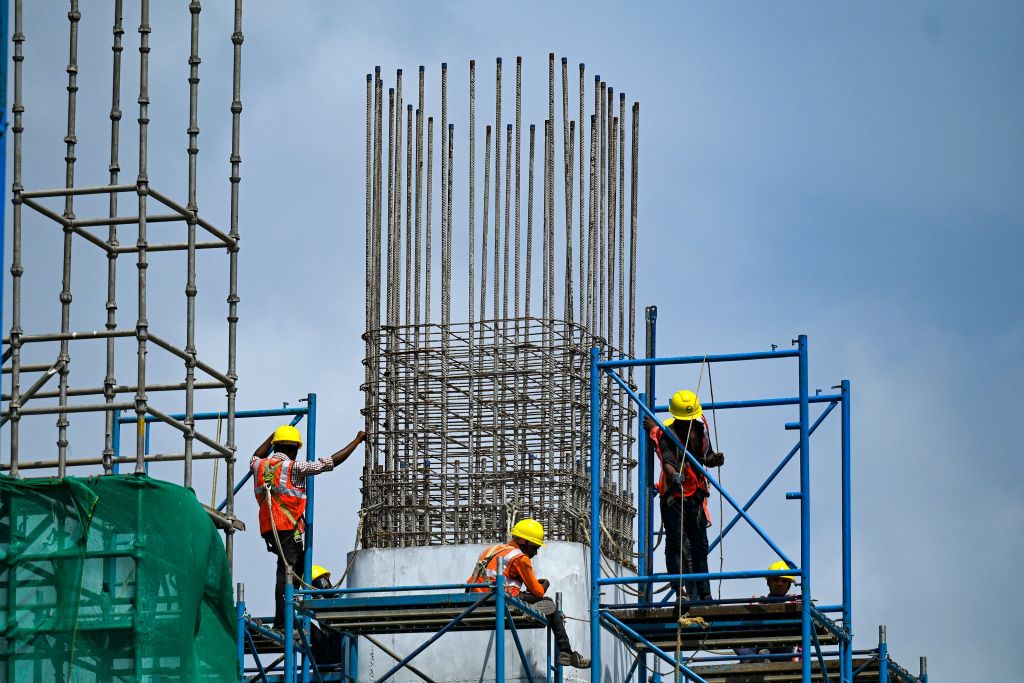- Tuesday, April 15, 2025
The report said resilient private consumption and strong public investment will help the South Asian economy remain ‘strong’ at 6.2 per cent.

By: Shubham Ghosh
INDIA is projected to grow at 6.2 per cent in 2024, supported by robust domestic demand and strong growth in the manufacturing and services sectors, the United Nations has said.
The UN World Economic Situation and Prospects (WESP) 2024 report, launched on Thursday (4), said that the gross domestic product (GDP) in South Asia is projected to increase by 5.2 per cent in 2024, driven by a robust expansion in India, which remains the fastest-growing large economy in the world.
“Growth in India is projected to reach 6.2 per cent in 2024, slightly lower than the 6.3 per cent estimate for 2023, amid robust domestic demand and strong growth in the manufacturing and services sectors,” the report said.
Read: India to become world’s top economic power by 2100, eclipsing US, China: report
India’s GDP is projected to increase to 6.6 per cent in 2025.
The report noted that economic growth in India is projected to remain “strong” at 6.2 per cent this year mainly supported by resilient private consumption and strong public investment. While manufacturing and services sectors will continue to support the economy, erratic rainfall patterns will likely dampen agricultural output, it said.
Read: Maharashtra now preferred destination for foreign investors: CM Shinde
“Indian economy again outperformed its peers, not just this year but the last few years,” chief of the Global Eonomic Division Monitoring Branch, Economic Analysis and Policy Division (UN DESA), Hamid Rashid told reporters.
He said that India’s economic growth has consistently remained over six per cent and “we believe this will continue in 2024 and 2025 as well.” Rashid noted that although inflation was relatively high for India, it didn’t have to raise rates as much and inflation has come down quite a bit.
“That has allowed the government to sustain the fiscal support that it needed,” he said adding that “we didn’t see significant fiscal adjustments or fiscal retrenchment in India.
“Overall, domestic consumption is growing, household spending has grown, employment situation has improved quite a bit. So we are very optimistic about India’s growth outlook in the near term,” he said.
In response to a question on factors holding back India’s economic growth, director of the Economic Analysis and Policy Division Shantanu Mukherjee cited India’s GDP growth rates of four years from 2022-2025 and said, “I’m not sure that 7.7%, 6.3%, 6.2% and 6.6% is exactly holding something back.”
“In a kind of abstract sense, one would run the risk of overheating an economy if you grew at much faster rates at the size and complexity of India,” he said.
The labour market situation in South Asia remained fragile in 2023 despite improvements in some countries. In India, labour market indicators improved over the year, with labour force participation increasing in August to its highest rate since the onset of the pandemic, the report said, citing the Reserve Bank of India. The unemployment rate averaged 7.1 per cent in September, the lowest value in a year, with unemployment in rural areas falling despite weaker monsoon rains.
Youth unemployment rates declined significantly during the first quarter of 2023 to the lowest value since the pandemic, it said.
The report also noted that the Reserve Bank of India has been cautious about opening the country’s financial markets and has been implementing appropriate risk management systems.
The UN said global economic growth is projected to slow from an estimated 2.7 per cent in 2023 to 2.4 per cent in 2024, trending below the pre-pandemic growth rate of three per cent. This latest forecast comes on the heels of global economic performance exceeding expectations in 2023.
(With PTI inputs)